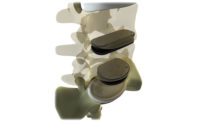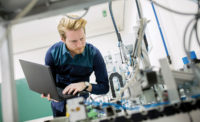PASADENA, CA - Alliance Spacesystems LLC has delivered to the Naval Research Laboratory, in support of DARPA’s FREND program, the flight prototype robotic arm for a possible future satellite that could extend the lives of orbiting spacecraft by conducting on-orbit repairs or towing fuel-depleted spacecraft to new orbits.
The Defense Advanced Research Projects Agency (DARPA), via the Naval Research Laboratory (NRL), contracted with Alliance Spacesystems to design and build the robotics that would allow a servicing spacecraft to dock with satellites not originally designed for servicing. Alliance is best known for designing and building the robot arms crucial in the exploration of Mars, such as those on the Mars Phoenix lander and the Mars rovers Spirit and Opportunity.
The newly delivered flight arm and electronics, including first-level control algorithms, is part of the Front-end Robotics Enabling Near-term Demonstration (FREND) program. The 2 meter-long FREND arm offers the potential for spacecraft salvage, repair, rescue, repositioning, de-orbit and retirement, and debris removal. The arm would eventually be equipped with end effectors such as an adapter-ring clamp or bolt-hole gripper.
“Alliance Spacesystems is helping the DARPA/NRL team to advance the state-of-the-art to enable autonomous satellite rendezvous, grappling and docking with any legacy satellite on orbit today.,” said Jess Sponable, DARPA program manager for the FREND program. “This service offers potential for satellites to operate 5, 10 or 15 years longer, to be salvaged if they are in an inoperable orbit, or to be transferred to a new orbital position if they are unable to make that transit on their own.”
According to DARPA, the goal of the FREND program is to develop, demonstrate and fly technologies designed to increase the survivability and operational effectiveness of military and commercial spacecraft in geosynchronous orbit.
The overall FREND system is designed to provide the hand-eye functionality and coordination for future servicing spacecraft. It combines detailed stereo photogrammetric imaging with robotic multi-degree-of-freedom manipulators. The Alliance-built arm will be part of a spacecraft payload that could be flight-tested later this decade. Last year, the DARPA/NRL team successfully completed full-scale laboratory demonstrations of the FREND system
Get our new eMagazine delivered to your inbox every month.
Stay in the know with Quality’s comprehensive coverage of the manufacturing and metrology industries.
SIGN UP TODAY!Copyright ©2024. All Rights Reserved BNP Media.
Design, CMS, Hosting & Web Development :: ePublishing


